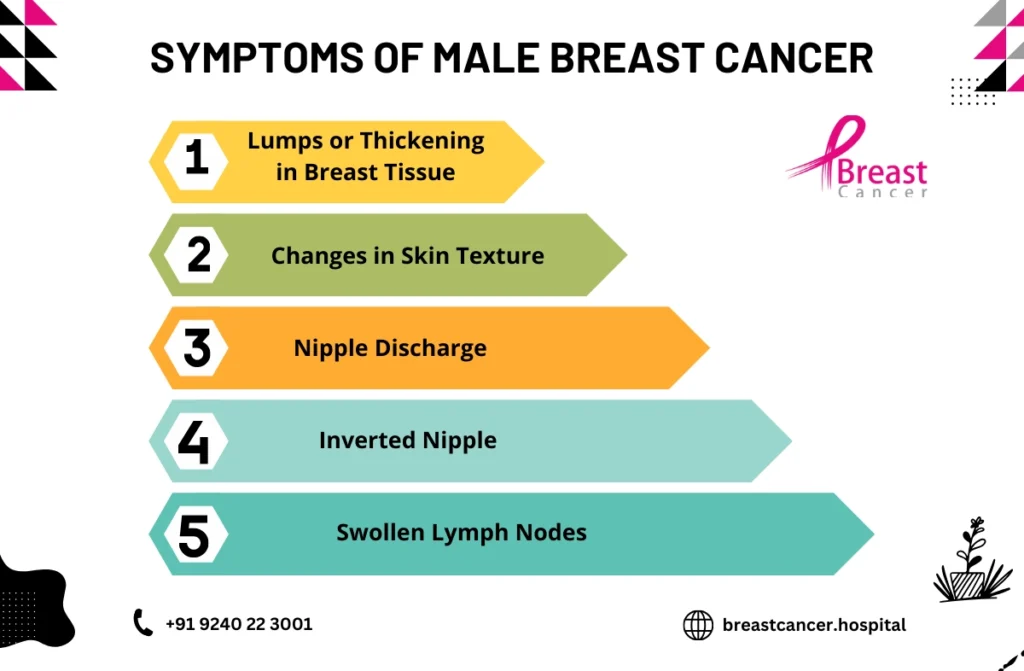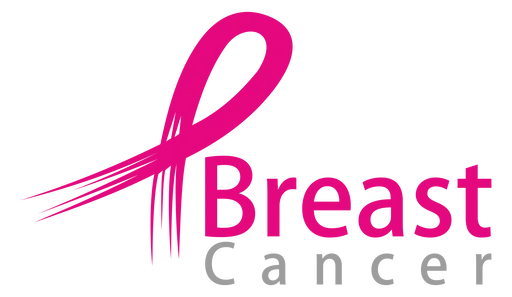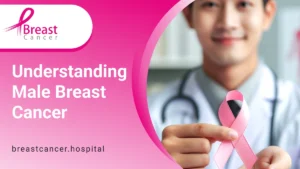Breast cancer is often associated with women, but male breast cancer is a reality that many people are unaware of. While it’s much rarer than female breast cancer, men are still at risk, particularly as they age. Recognizing the signs early and seeking prompt treatment can significantly improve outcomes. This blog is designed to raise awareness, spark interest, create a desire for action, and guide you through essential steps if you or a loved one is facing breast cancer.
What is Male Breast Cancer?
Male breast cancer is a rare form of cancer that occurs in the small amount of breast tissue present in men. Though it accounts for less than 1% of all breast cancers, its impact on men is no less serious. Understanding the risk factors and symptoms can lead to early detection and more effective treatment.
Risk Factors for Male Breast Cancer
Several factors increase a man’s risk of developing breast cancer:
- Age: Male breast cancer is most commonly diagnosed in men between the ages of 60 and 70.
- Family History: Men with a family history of breast cancer (in men or women) are at a higher risk.
- Genetic Mutations: Mutations in the BRCA1 and BRCA2 genes are closely linked to male cancer.
- Hormone Levels: High levels of estrogen (which can occur due to obesity or other conditions) can increase the risk of breast cancer in men.
- Radiation Exposure: Prior radiation treatment to the chest area increases the likelihood of developing this cancer.

Understanding Male Breast Cancer Symptoms
Symptoms of male breast cancer are often subtle and can be mistaken for other conditions. This is one reason men tend to delay seeking medical advice. Knowing what to look for is critical:
Common Symptoms of Male Breast Cancer
- Lumps or Thickening in Breast Tissue: A painless lump in the breast or chest area is the most common symptom.
- Changes in Skin Texture: Dimpling, puckering, or redness of the breast skin.
- Nipple Discharge: Blood or clear fluid coming from the nipple is a warning sign.
- Inverted Nipple: A sudden inward turning of the nipple can be indicative of breast cancer.
- Swollen Lymph Nodes: Swelling in the underarm or around the collarbone may suggest that cancer has spread to nearby lymph nodes.
If you experience any of these symptoms, it’s essential to consult a doctor as soon as possible for further testing, which may include a mammogram or biopsy.
Importance of Early Detection
Male’s breast cancer is often diagnosed at a later stage than breast cancer in women. This is primarily because men do not consider themselves at risk and are less likely to seek medical attention for breast-related symptoms. Early detection through awareness and prompt testing can significantly improve the breast cancer survival rate, which varies based on the stage of diagnosis.
- Localized (Stage 1): 5-year survival rate is over 90%.
- Regional Spread (Stage 2): Survival rates drop to around 70-75%.
- Distant Metastasis (Stage 3 and beyond): Survival drops to about 25-30%.
General Information about Male Breast Cancer
Breast cancer is most commonly associated with women, but it can also affect men, albeit much rarer. Male breast cancer is a condition where cancerous cells develop in the tissue of the male breast. Although breast cancer in men is less common, it is still a significant concern, and early detection can improve outcomes. Understanding the risk factors, symptoms, and stages of the disease is crucial for diagnosis and treatment.
The main risk factors for breast cancer in men include age, family history, genetic mutations (like BRCA1 and BRCA2), and hormonal imbalances. Though it is a rare form of cancer, the growing awareness about male breast cancer symptoms has led to earlier diagnosis, allowing for more effective treatment options.
Key Male Breast Cancer Symptoms
- Lump in the breast area: This is often the first sign of breast cancer in men.
- Pain or tenderness in the breast region.
- Changes in the skin over the breast (redness or scaling).
- Nipple discharge that is not related to breastfeeding.
- Enlargement of the breast tissue (gynecomastia) or changes in the shape of the breast.
If you experience any of these male breast cancer symptoms, it is essential to seek medical advice promptly. Early detection is key to improving the male breast cancer survival rate.
Types of Male Breast Cancer
Just as with women, there are several different types of male breast cancer, each with distinct characteristics and treatment requirements.
- Ductal Carcinoma In Situ (DCIS)
This is a non-invasive cancer, where abnormal cells are confined to the ducts of the breast. It is not spread to the surrounding tissue, and the male breast cancer survival rate is typically high for this type when caught early.
- Invasive Ductal Carcinoma (IDC)
IDC is the most common form of male breast cancer. It starts in the milk ducts and spreads to surrounding tissues. This invasive cancer requires aggressive treatment such as surgery, chemotherapy, and possibly radiation therapy.
- Invasive Lobular Carcinoma (ILC)
This form of cancer starts in the lobules (milk-producing glands) and can spread to other parts of the body. It is rare in men but requires a comprehensive treatment approach, similar to IDC.
- Inflammatory Breast Cancer
This is a rare but aggressive form of breast cancer in men. The breast becomes red, swollen, and warm, and may look inflamed. Male breast cancer symptoms in this case are more severe, requiring immediate attention.
- Paget’s Disease of the Nipple
Although rare, Paget’s disease involves the skin of the nipple and areola. It often occurs alongside other types of breast cancer, and the symptoms may include itching, redness, or discharge from the nipple.
Treatment Options and Survival Rates
Understanding the treatment options for male breast cancer is crucial for making informed decisions. The good news is that treatment for breast cancer is similar to that for female breast cancer and often involves a combination of therapies.
Common Treatments for Male Breast Cancer
- Surgery: The most common surgery is a mastectomy, where the breast tissue is removed. Sometimes, lymph nodes may also be removed if cancer has spread.
- Radiation Therapy: Used to kill any remaining cancer cells after surgery.
- Chemotherapy: Drugs are used to destroy cancer cells that have spread to other parts of the body.
- Hormonal Therapy: Many male breast cancers are hormone receptor-positive, meaning they grow in response to hormones like estrogen. Medications such as tamoxifen are often prescribed to block these hormones.
- Targeted Therapy: For men with HER2-positive cancers, drugs like trastuzumab (Herceptin) may be effective.
Male Breast Cancer Survival Rate
As with all cancers, survival rates for male cancer vary depending on how early the disease is detected and how aggressively it is treated. While breast cancer survival rates have improved in recent years, the key to improving outcomes lies in early detection and tailored treatment plans. Statistics show that men whose cancer is diagnosed early have significantly higher survival rates.
Where Does Breast Cancer Begin in Men?
Breast cancer in men begins in the cells of the breast tissue, which includes ducts and lobules. However, since men have much less breast tissue than women, most male breast cancer cases start in the ducts. Here’s a deeper look:
- Ductal carcinoma: This is the most common form of male breast cancer, beginning in the milk ducts.
- Lobular carcinoma: Rare in men, this type starts in the lobules, which are the milk-producing glands, though these are underdeveloped in men.
It is crucial to recognize that male breast cancer symptoms may not always be immediately obvious. A lump in the breast or changes in the skin texture may be signs of the disease, but because men tend to have less breast tissue, these signs can be harder to detect.
How is Male Breast Cancer Diagnosed?
Diagnosing male breast cancer involves several key steps to ensure accurate results and early detection:
- Physical examination: A doctor checks for lumps, changes in the skin, or other visible signs.
- Mammography: Similar to women’s breast cancer screening, this imaging test uses X-rays to detect abnormalities in the breast tissue.
- Ultrasound and biopsy: These tests help determine the nature of any lumps found, providing clarity on whether cancerous cells are present.
- Genetic testing: Since male breast cancer can sometimes be linked to inherited gene mutations, genetic testing for BRCA1 or BRCA2 may be conducted.
Early diagnosis is crucial for improving the male breast cancer survival rate, which can vary depending on the stage and type of cancer detected.
What Causes Male Breast Cancer?
Male breast cancer is caused by a combination of factors, although the exact cause remains unclear. Some contributing factors include:
- Genetic mutations: Inherited mutations in genes like BRCA1 and BRCA2 are significant risk factors.
- Hormonal imbalances: Higher estrogen levels may increase the risk.
- Age: Risk increases with age, particularly after 60.
- Family history: A history of breast cancer in family members raises the likelihood.
- Radiation exposure: Previous radiation treatments to the chest area increase risk.
It’s essential to recognize these risk factors for early detection and prevention.
What Should You Do Next?
If you or someone you know is showing signs of male cancer or is at high risk due to family history or genetic factors, taking action early can save lives. Here’s what you can do:
- Schedule Regular Checkups: Men at higher risk should discuss breast cancer screenings with their doctor. Even though routine mammograms are not usually recommended for men, those with a family history of the disease may benefit from genetic counseling and testing.
- Know Your Family History: Men with relatives who have had breast or ovarian cancer may carry the BRCA1 or BRCA2 mutation. Getting tested can inform preventive measures, including increased surveillance or preventive surgery.
- Be Aware of Symptoms: If you notice any changes in your breast tissue, don’t ignore them. Speak to your doctor right away.
- Consider Lifestyle Changes: Maintaining a healthy weight, exercising regularly, and limiting alcohol intake can reduce your risk of breast cancer and other health issues.
Conclusion
Male breast cancer may be rare, but its impact can be severe. By understanding the risk factors, recognizing symptoms, and seeking timely treatment, men can significantly improve their chances of survival. If you’re experiencing any warning signs or have a family history of breast cancer, don’t wait consult your healthcare provider today.




